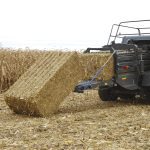
Making beans even healthier
Enhanced amino acid levels especially important for customers in countries where beans are a staple in the diet

The product, not the process
New rules for assessing novel foods could speed the arrival of better varieties for producers and consumers

Boron. An oft-forgotten (micro) nutrient for soybeans
Compared to other nutrients, soybeans need only a little, but how little is enough?

The Canada fleabane problem
At current corn and soybean prices, the value of control is at an all-time high

Are corn and soybeans on the wane?
Could other crops erode their dominance in Eastern Canada, and if so, which ones?

Impact of delayed post-emergence herbicide in soybean
#CropPatrol: Consider a two-pass treatment tailored to the weed spectrum in each field

An alternative cover crop for soybeans
Broadcast rye provides more management options and improves soil health

Strip till catching on
Residue management and improved soil health are among the benefits

Are your soybeans “O-K”?
Alpine agronomist says that soybeans respond remarkably well to late-season potassium applications

A new trait for corn rootworm
The RNAi trait will launch in Canada in 2023 and complement current Bt Cry protein traits


